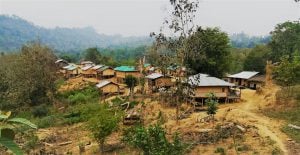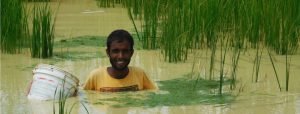The ocean covers 70% of the world’s surface, while the cryosphere – including Antarctica and the Greenland ice cap – makes up 11% of the world’s landmass. Combined they create the planet’s largest carbon sink, absorbing over 90% of the carbon dioxide emitted into the atmosphere from burning fossil fuels.
But carbon emissions are triggering changes to marine environments – coral bleaching, ice melt, sea level rise, and disruption to marine habitats, to name a few. The cryosphere – those parts of the earth’s surface where water is frozen – is changing, too. Permafrost is thawing and glaciers melting, potentially leading to irreversible “tipping points”.
There are many knowledge gaps to fill, and little time to do so. For example, how fast is the Qinghai-Tibetan plateau (home to the largest store of frozen water beyond the Poles) disappearing? And what are the implications for sea level rise, and shifts to ocean currents and weather systems?
There are also very real social and economic implications from these changes. For example, on August 10, meltwater from the Kyagar glacial lake in China’s Xinjiang province flooded downstream rivers.
Kang Shichang, head of the State Key Laboratory of Cryospheric Sciences, says that climate warming will worsen glacier melting and shrinkage, making glacial lake collapses more frequent.
Reviewing the science
To help us understand where the science is on these important questions, the Intergovernmental Panel on Climate Change (IPCC), a body under the auspices of the United Nations tasked with providing an objective view of climate change science to governments and policymakers, will release its Special Report on Oceans and the Cryosphere (SROCC) in September 2019.
Between July 23-28, over 100 lead authors of the report from 35 nations met in the Chinese city of Lanzhou in Gansu province, north-west China. After sifting through 12,000 comments, the meeting will result in a second draft of the SROCC in the coming months. There will be one more meeting to finalise the report in March next year.
The timing of the report in 2019 will be critical. Within a year of its release, countries will be asked to submit updated emissions reduction targets under the terms of the Paris Agreement (the first since the agreement was made in 2015).
What’s different about this report?
The IPCC is divided into three working groups. The first looks at the physical science basis for climate change. The second looks at the human impacts, adaptation and vulnerability to climate change. The third considers how to respond to changes in the climate.
Zhai Panmao, joint chair of the IPCC’s 1st working group, told China Dialogue that although earlier reports have covered the ocean and cryosphere, the content was scattered across different chapters of assessment and lacked cohesion.
Valerie Masson-Delmotte, joint chair of the IPCC’s 1st working group, hinted that the findings would expand on the topic of ocean acidification and include for the first time a synthesis report on the risk of marine heatwaves.
The new report will also consider the social and economic impacts of changes to the ocean and cryosphere. Hans-Otto Pörtner, joint chair of the 2nd working group, said that rapid ocean acidification at low latitudes is expected to reduce ocean biodiversity and damage the livelihoods of coastal fishermen, while industrialised deep-ocean fishing would be less affected.
Public debate around global warming tends to focus on rising temperatures on land. But a warmer ocean will also affect currents and weather patterns, with changes on land, too. There are different risks for different regions, but vulnerable populations will be affected the most.

Developing country voices
The IPCC is paying more attention to the overall effects of climate change on climate-vulnerable regions and populations. It is working closely with developing nations that will be adversely impacted by climate change.
In October 2013 the IPCC decided it needed to “increase the number of IPCC activities in developing countries”.
All four of the SROCC meetings have so far been held in developing nations but despite these efforts there is still an imbalance in representation between developed and developing nations. For example, the IPCC solicits reviews through an open online process – anyone with the right qualifications can apply. But Zhai Panmao pointed out that most of the authors and reviewers for the SROCC report are still from Europe or the US, with notably fewer participants from developing nations.
“Either because of the relative impact of climate change on these nations, or because of larger population numbers, we need to see more participation from developing nations,” he said.
In October this year registration for a second round of public review will start. To address the lack of developing country representation, Zhai is calling for scientists from developing nations to sign up. He also wants to see the IPCC issue invitations targeted at nations or regions that participate less so their views can be reflected.
To ensure a more representative and equitable approach is adopted, let’s hope developing nation experts seize the opportunity.

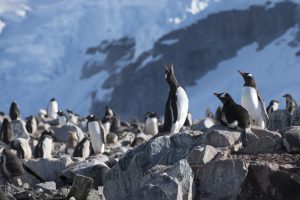
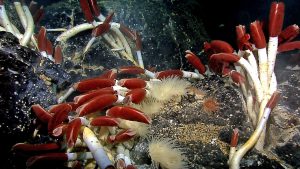
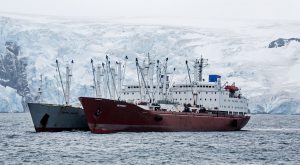
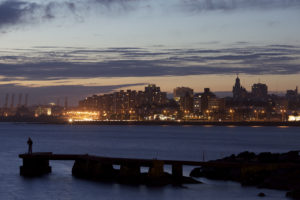
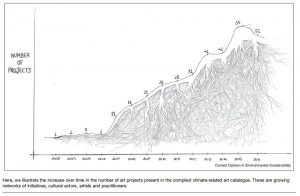
![Peafowls have become a menace in LunchaKameru village in Sumbuk block of South Sikkim, so every morning desperate villagers go to an open patch of land in forest to spread feed for peafowls in the hope that their crops will be spared. They have also constructed water basins out of bamboo [image by: Nidhi Jamwal]](https://dialogue.earth/content/uploads/2018/08/HWC1-300x172.jpg)
